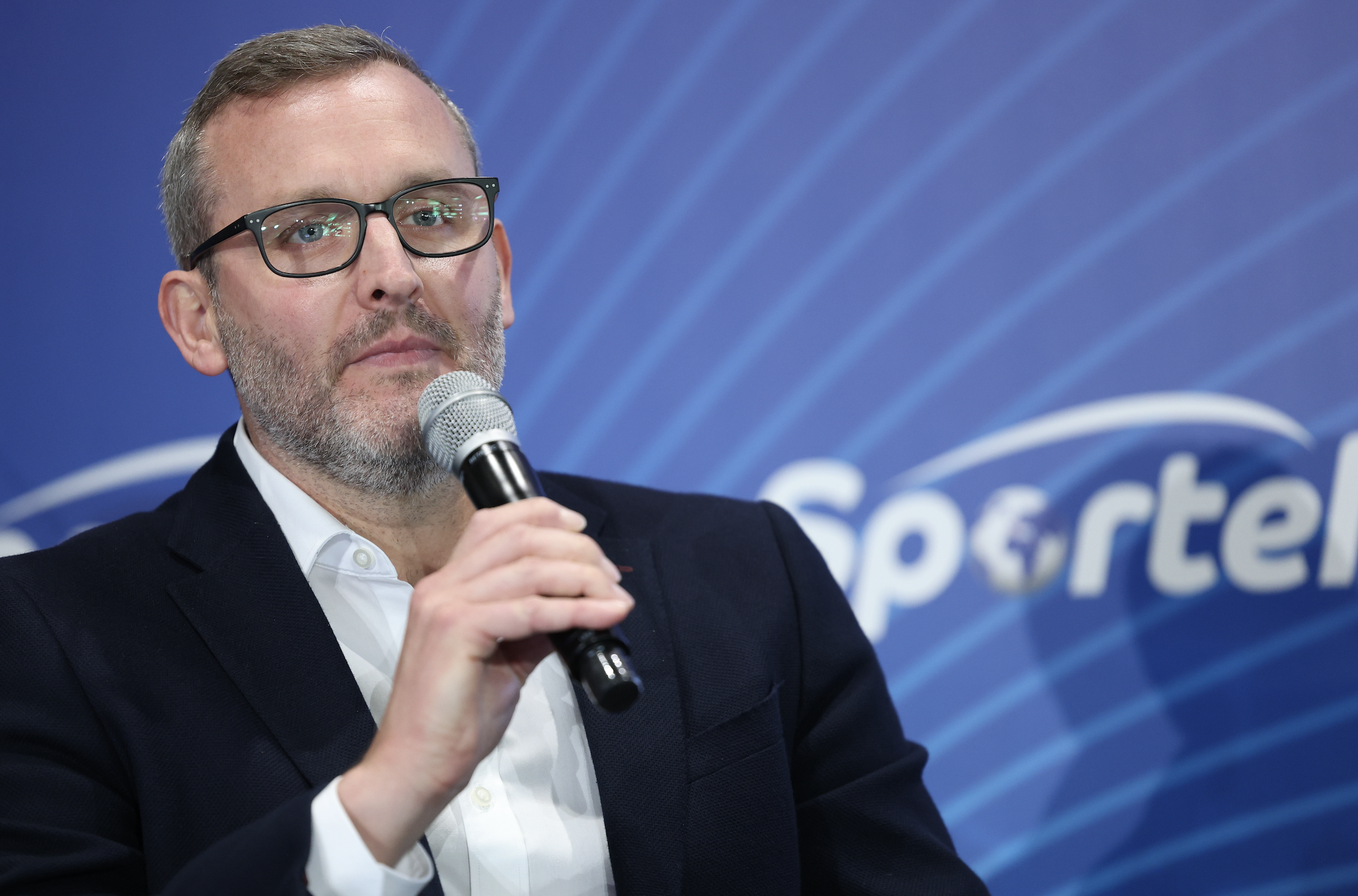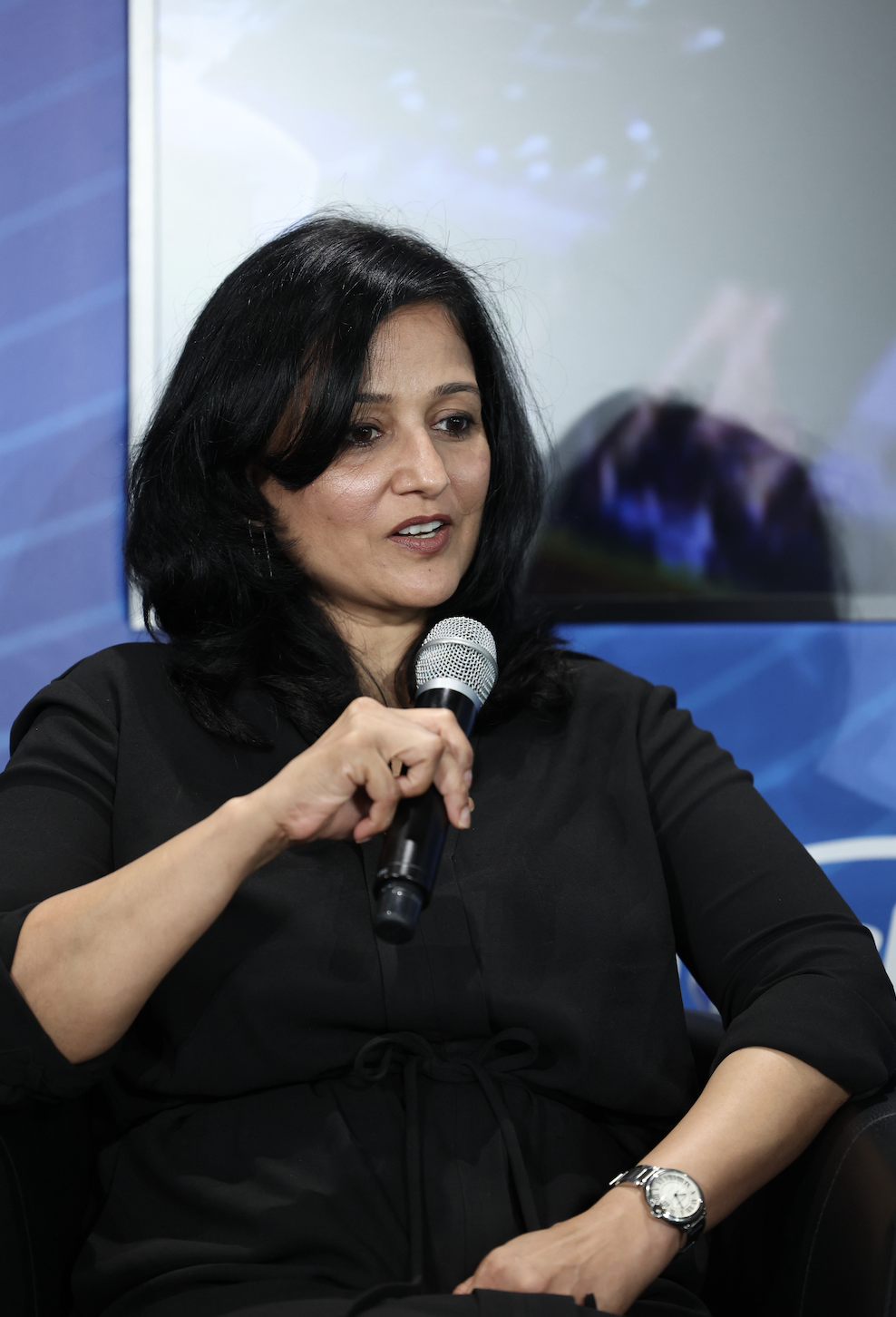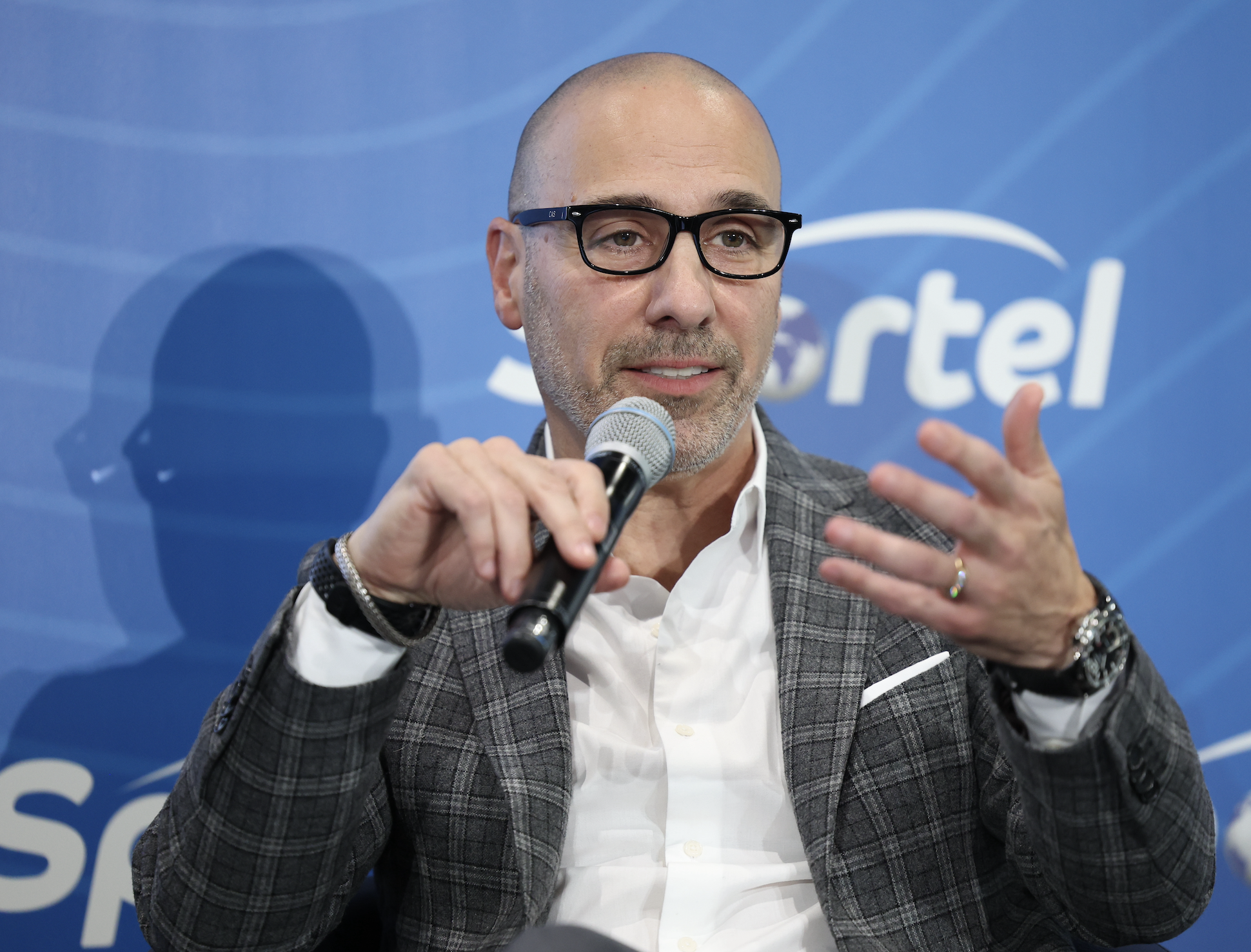SPORTEL Report: The Push/Pull of Social Media, OTT Streaming Powered by New Tools
Panelists parse the transformation of sports-content creations and distribution
Story Highlights
SPORTEL, the annual sports-marketplace event where rights deals are the name of the game, is increasingly shifting its focus to how technology and new platforms are transforming sports-content creation and distribution. A panel discussion zeroing in on the convergence of next-gen production tools, social media, and OTT laid clear the opportunities ahead and how best to address them.
A key challenge in the current digital landscape is figuring out how to set up an effective digital and social media team. How big should it be? Who is in charge of what? And how can technology make a difference in the way content is created and published?

Endeavor’s Peter Bellamy: “We all work in this hybrid media-rights landscape and are trying to add value.”
Endeavor Chief Commercial Officer Peter Bellamy said that setting up that team properly depends on the maturity of the business and the size of the organization.
“If you are starting a direct-to-consumer journey with your fans,” he said, “you can start with two or three people. But I would say a lot of our clients have maybe five to 10. And then our tier-one clients will have very large teams.”
The difference between serving tier-one clients and smaller clubs or leagues has required technology providers themselves to adjust. Anmol Malhotra, global head of sports partnerships, SNAP, noted that, in the early days of SNAP, partners like the NFL had multiple staffers focused just on the Snapchat platform.
“We soon realized that we can’t scale a business because not everyone is the NFL or the NBA,” he explained. “We had to change the way that we actually work with our partners and create tools to empower them, no matter how big or small. Our goal more recently is making these tools that empower our partners to do it on their own because we can’t handhold everybody.”

Magnifi’s Meghna Krishna: “You might be doing a great job, but, if no one has heard of you or no one has seen the content, it’s kind of a wasted effort.”
Magnifi Chief Revenue Officer Meghna Krishna said Magnifi can help a small social-media team appear larger than life, thanks to rules-based highlights creation. Key is the ability for a smaller team to crank out more content.
“There’s no way the current number of people can churn out the volume of content required to have a presence on social media or at least the presence that you would like to have,” she said. “We create automated digital- ready content at speed and at scale and in real time. And that is required today to be active on social media and also drive traffic to your OTT or broadcast channels. We do it in an automated fashion that is AI-based and can create highlights by team, by player, by any event that is happening. It helps monetize and generate revenue.”
For example, every social-media platform requires a slightly different approach to how video is served up.
“Some will require 30 seconds, some will require three minutes, others will require 10 minutes,” she explained. “Our platform allows highlights to be created for any of the sizes and lengths with the click of a button, and then you can publish it again with another click of a button. That allows the team to focus on the important part of the analytics and understanding of consumer behavior and publish more content that’s more applicable to their audience.”

C360’s Carlos Silva: “There is nothing worse than an executive who says we need to put it on Twitter or Instagram but they’ve never even downloaded the app.”
C360 CEO Carlos Silva said the team-building process also requires management to be on all the platforms to ensure that proper decisions are made.
“There is nothing worse than an executive who says we need to put it on Twitter or Instagram, but they’ve never even downloaded the app and used it,” he added. “You need staff that understands each of the platforms, and, every three months, you’ve gotta be aware that it changes. Platforms like SNAP are different now than they were eight months ago. If you take it for granted, your content will be terrible, and you’ll wonder why you fail. So don’t be lazy.”
Bellamy noted that, for teams and clubs, the best way forward is to realize that not every single engagement with your fans can drive a transactional process.
“What they need to be doing is driving a centralized data strategy where they can understand every fan and what they’re doing,” he explained. “For example, a fan may very rarely go to games at the stadium but can buy a huge amount of merchandise and watch loads of on-demand video. But maybe they don’t interact with social media. You need to understand those trends and surface offers where the fan can feel like there is added value. For example, they watch 20 VOD assets in a month and get 20% off a shirt in the online store. That is a crucial part: it’s not all about direct revenue streams.”
Bellamy added that, in the past two years, the end-to-end OTT video-platform provider has continued to optimize platform solutions and flexibility for clients.
“We’ve also built growth services and consultancy layers around that platform as well,” he said, “and we think that has been very additive to our partnership. We all work in this very complex kind of hybrid media-rights landscape and are trying to add value and look at what success looks like. And then, we build the product according to that kind of trends and look at actual growth services to deliver increased revenue opportunities.”
Defining a Great Experience
The panelists agreed that a good video experience begins with one simple rule: minimal lag time. But defining a great video experience in a social- media landscape covers a lot of variables, including what the platform is.

SNAP’s Anmol Malhotra: “There’s millions of people on Snapchat that love [ESPN’s] SportsCenter and that brand and have no idea that it even exists on TV.”
As an example, he cited ESPN and the work SNAP did around SportsCenter: “Instead of being 30 minutes to an hour and having hosts wearing suits and ties, they were wearing jeans and a T-shirt, and they were younger. It was much more based on the culture of sport and fashion and all the amazing things happening around the game. Now there’s millions of people on Snapchat that love SportsCenter and that brand and have no idea that it even exists on TV. That’s a powerful thing that we can bring to the table.”
Also important is raising awareness that the content event exists. Krishna said that Magnifi’s goal is to help create short clips and content that can drive awareness of ongoing events but also upcoming events.
“You might be doing a great job,” she pointed out, “but, if no one has heard of you or no one has seen the content, it’s kind of a wasted effort. I just feel that today, because there’s so much information available, you need to stand out.”
Echoing Krishna’s point, Bellamy said that consumers get frustrated by not being able to easily find the content they want, not just in sports but across media and entertainment in general.
“The aggregation of content is going to become more and more important for driving good consumer behavior,” he said. “From our point of view, we always need to be very careful in finding that balance of hitting the mission-critical kind of components really well: frictionless signup, a good-looking user interface for navigation, and a great streaming experience. But the areas that excite us is looking upstream and how you build compelling propositions and market them to get people to that destination experience.”
Bellamy noted the importance of things like statistical overlays, different camera angles, and other new content that can drive different behaviors. C360 is an example of an immersive-video company whose technology helps create new experiences but also enhances the current linear production.
“We capture about 10K of video in a 200-degree field of view, and then we can tilt and zoom live and do it all at broadcast quality,” he pointed out. “We also have the ability to create alternative camera views that can be taken out of the video and used in OTT. For example, every viewer can take control of the camera inside a race car.”
It’s all part of bringing fans closer to the action in new ways, added Silva. “Regular people don’t get credentials, so we can bring them to a place that they couldn’t otherwise go, like down to the field of play. I’ve been thinking about that for a long time as we even go back to the interactive-television days from 20 years ago. Now, with such good bandwidth and great cameras and the ability to stream on great platforms, we can provide that for users.”
To Bellamy, it’s also important to focus on understanding what features are crucial and resonating with OTT users. The key is to avoid gimmicks.
“It’s probably a little bit controversial,” he said, “but I don’t think the watch-room experience has been that well executed. I think everyone loves the idea of virtual watch rooms, but I’m still not sure it has been that well implemented at scale.”
Silva added that a platform like C360 can give fans a chance to have moments of control that can be beneficial.
“With pan, tilt, and zoom,” he said, “the fan can see something they never saw before. But we also know that they’re not going to watch the whole game from inside the net or an NFL pylon. Sometimes, [the industry] does things because we have the capabilities, but you can’t think consumers want to produce all the content for themselves; executive producers who are good at their job for a reason can do that. But we can provide moments.”
Also, Bellamy added, don’t forget the original-content side of the things, especially if you are a team or club, which is designed to build a two-way relationship with fans outside of the streaming of games.
“You have to look at that original-content strategy, the phasing and dropping of that content through an average week,” he said. “If you’re a Tottenham Spurs fan, what better way to spend your lunchtime on a Tuesday than to sit down in front of your laptop as you’re eating a sandwich to get an exclusive stream from the training ground where the manager just runs off the pitch and gives a quick update on injuries and form, etc. You’ve gotta think about what the actual objective is for the consumer engagement.”
Consistency in scheduling is also important as it builds consumer behavior that can hit the holy grail of “appointment viewing” regardless of whether it is a match day.
Malhotra advised remembering that teenagers are not watching hours of TV: their primary screen is their phone, and it is with them All. The. Time.
“At SNAP,” he said, “we want to amplify our partners’ goals, and, when you’re watching a sporting event, you’re talking to your friends and reacting to certain moments. We do a lot of really fun stuff with our camera marketing tools, like lenses and filters. But how do we resonate with a wider set of users? We’ve evolved towards shoulder programming or pre- and post-game coverage.”
And, added Krishna, don’t forget archived content. “The day before a big game is about to happen, there’s a 75% increase of people watching, so bringing up the archival content and all of that becomes very important. We can allow you to go through your archives and bring out the best of what has happened in the past years and publish it to social media rather quickly. All these things help bridge that gap between social media and OTT.”
